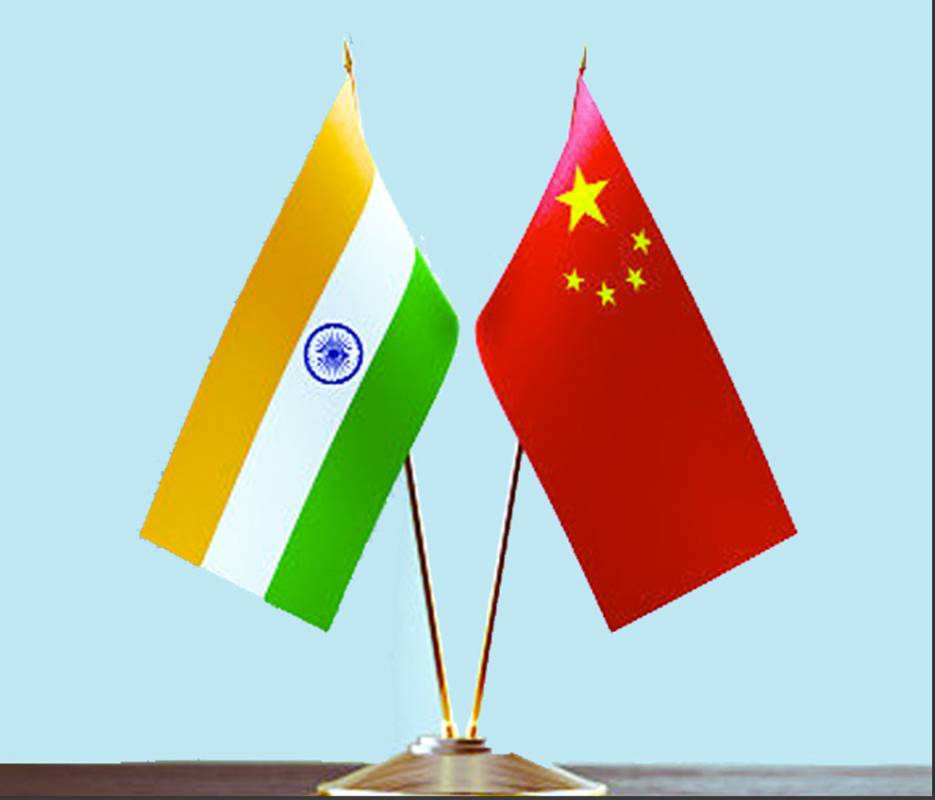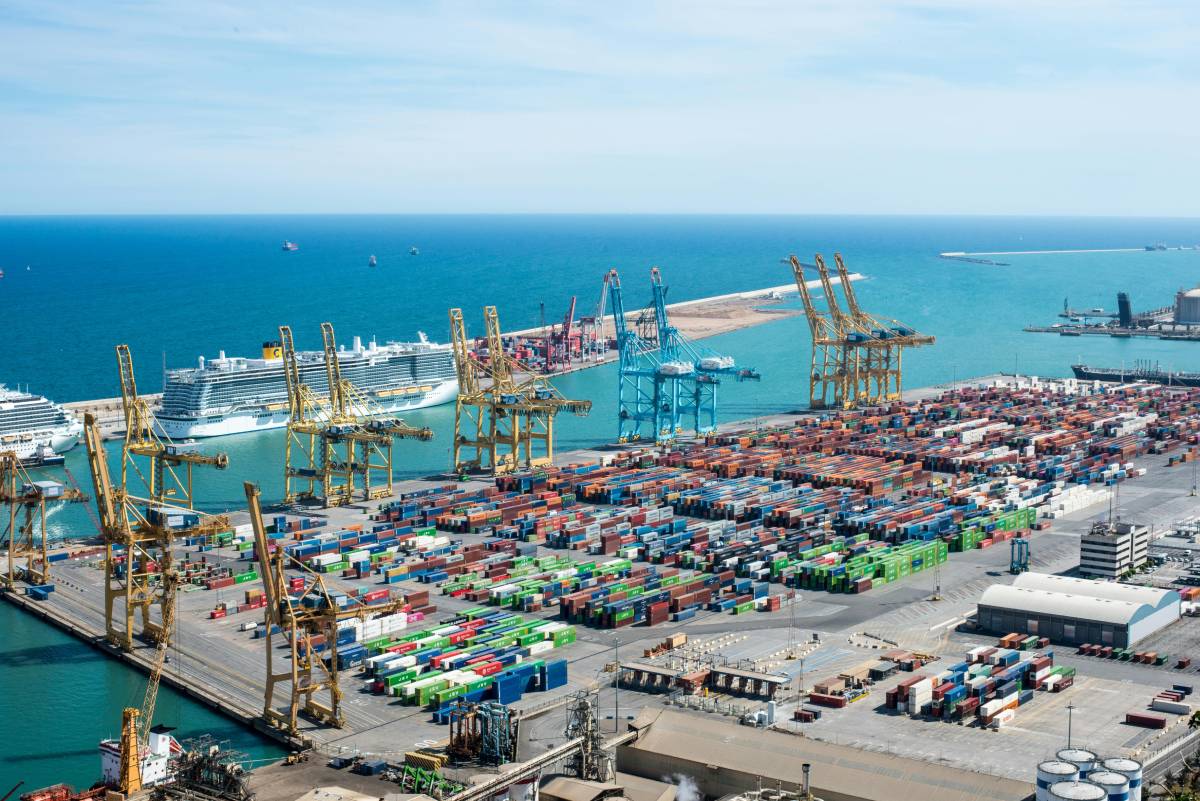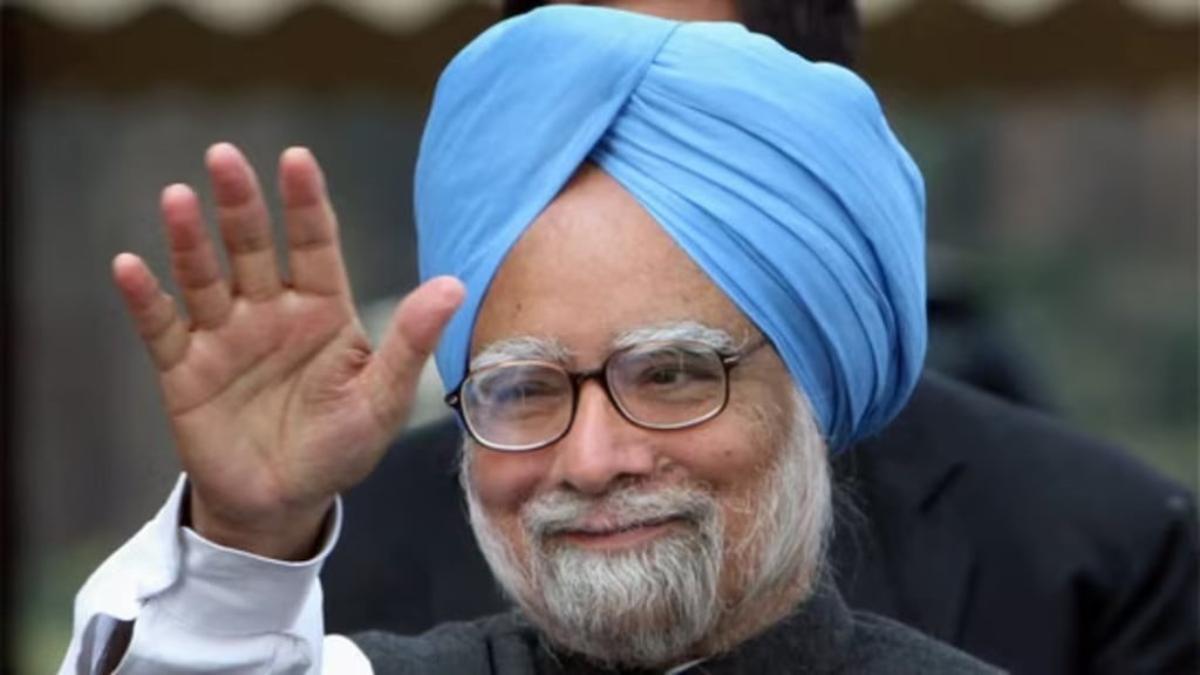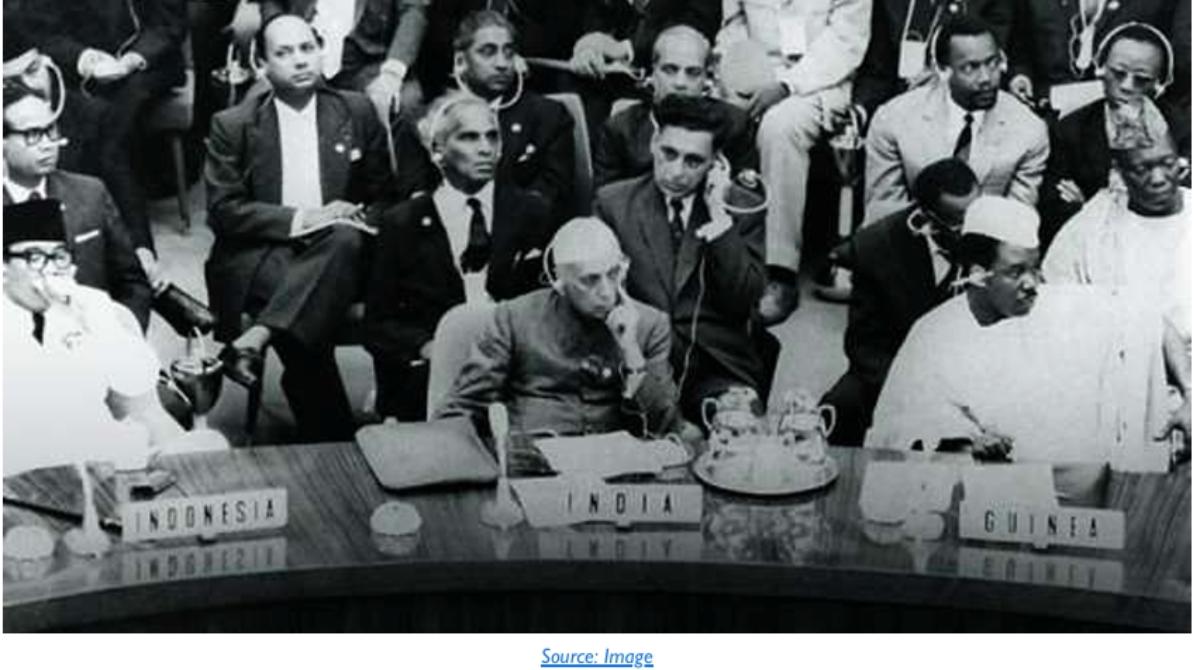A Pointer to a New Book
We begin with a pointer to the new book, India Versus China:Why They Are Not Friends, by Kanti Bajpai, Director, Centre on Asia and Globalisation and Wilmar Professor of Asian Studies at the National University of Singapore.
In the book, Bajpai has laid out four reasons why the two countries are unfriendly to each other: the first is their perceptions of each other.The second is their territorial claims and perimeters. The third is their strategic partnerships, where they tend to be on different, if not opposed, sides.The fourth is the asymmetry of power between them, which is steadily increasing.
You can watch an interview between Kanti Bajpai and Karan Thapar at
https://www.youtube.com/watch?v=V-Um-tpYczo&t=4s
or a discussion that was moderated by former Indian Foreign Secretary and Ambassador to China, Shivshankar Menon, held at the Centre for Social and Economic Policy.
https://csep.org/event/india-versus-china-why-they-are-not-friends/
Of course, this section has many more contributions curated from various sources on the topic of India –China relationship.
Can G-7 Realistically Counter China’s Military and Economic Influence?
India is not a part of G-7 but this year’s host, United Kingdom, invited India to participate the Summit as a guest – which India enthusiastically did, though Prime Minister joined the consultations in virtual mode. This year’s G-7 Summit was basically seen as a concerted statement of unity and purpose among European nations to counter the might of China which is seen as to operate like a hegemon.While the current G-7 Summit has raised much brouhaha, Policy Watch raises the question whether it can realistically counter China’s military and economic might. We do this by referring to some select pieces available in the public domain. But first a quick look at what the G-7 discussed. Below we present the summary of the communique released after the Summit:
| 2021 G7 Leaders’ communiqué: Our shared agenda for global action to build back better
We, the leaders of the Group of Seven, met in Cornwall on 11-13 June 2021 determined to beat COVID-19 and build back better. We remembered everyone who has been lost to the pandemic and paid tribute to those still striving to overcome it. Inspired by their example of collaboration and determination, we gathered united by the principle that brought us together originally, that shared beliefs and shared responsibilities are the bedrock of leadership and prosperity. Guided by this, our enduring ideals as free open societies and democracies, and by our commitment to multilateralism, we have agreed a shared G7 agenda for global action to: End the pandemic and prepare for the future by driving an intensified international effort, starting immediately, to vaccinate the world by getting as many safe vaccines to as many people as possible as fast as possible. Total G7 commitments since the start of the pandemic provide for a total of over two billion vaccine doses, with the commitments since we last met in February 2021, including here in Carbis Bay, providing for one billion doses over the next year. At the same time we will create the appropriate frameworks to strengthen our collective defences against threats to global health by: increasing and coordinating on global manufacturing capacity on all continents; improving early warning systems; and support science in a mission to shorten the cycle for the development of safe and effective vaccines, treatments and tests from 300 to 100 days. Reinvigorate our economies by advancing recovery plans that build on the $12 trillion of support we have put in place during the pandemic.We will continue to support our economies for as long as is necessary, shifting the focus of our support from crisis response to promoting growth into the future, with plans that create jobs, invest in infrastructure, drive innovation, support people, and level up so that no place or person, irrespective of age, ethnicity or gender is left behind.This has not been the case with past global crises, and we are determined that this time it will be different. Secure our future prosperity by championing freer, fairer trade within a reformed trading system, a more resilient global economy, and a fairer global tax system that reverses the race to the bottom.We will collaborate to ensure future frontiers of the global economy and society, from cyber space to outer space, increase the prosperity and wellbeing of all people while upholding our values as open societies.We are convinced of the potential of technological transformation for the common good in accordance with our shared values. Protect our planet by supporting a green revolution that creates jobs, cuts emissions and seeks to limit the rise in global temperatures to 1.5 degrees.We commit to net zero no later than 2050, halving our collective emissions over the two decades to 2030, increasing and improving climate finance to 2025; and to conserve or protect at least 30 percent of our land and oceans by 2030.We acknowledge our duty to safeguard the planet for future generations. Strengthen our partnerships with others around the world. We will develop a new partnership to build back better for the world, through a step change in our approach to investment for infrastructure, including through an initiative for clean and green growth. We are resolved to deepen our current partnership to a new deal with Africa, including by magnifying support from the International Monetary Fund for countries most in need to support our aim to reach a total global ambition of $100 billion. Embrace our values as an enduring foundation for success in an ever changing world. We will harness the power of democracy, freedom, equality, the rule of law and respect for human rights to answer the biggest questions and overcome the greatest challenges. We will do this in a way that values the individual and promotes equality, especially gender equality, including by supporting a target to get 40 million more girls into education and with at least $2¾ billion for the Global Partnership for Education. We shall seek to advance this open agenda in collaboration with other countries and within the multilateral rules-based system. In particular, we look forward to working alongside our G20 partners and with all relevant International Organisations to secure a cleaner, greener, freer, fairer and safer future for our people and planet. |
Like PM Modi, US President Joe Biden also attended the Summit virtually. But does Biden’s worldview on G-7 impact India? Policy Watch is privileged to reproduce an insightful piece by Shyam Saran, former Foreign Secretary of India.
| As Biden shapes a new US policy, China changes tack on ties with India by Shyam Saran7
Biden sees China as more of an economic threat than a security one.The US’ stress on transatlantic alliances reflect this. In his speech at the State Department earlier in February, US President Joe Biden spelt out the priorities for his administration’s foreign policy. These included his intention to return the US to active global engagement, work closely with allies, promote multilateralism, and uphold democratic values and human rights. He identified China as a formidable competitor and Russia as a threat but conveyed his intention to compete and, if necessary, confront, while also engaging with them to meet global challenges such as climate change, arms control, non-proliferation and pandemics. On specific issues, Biden announced an end to US support to Saudi Arabia in the civil war in Yemen and reviving the Iran nuclear deal. India was not mentioned nor was Indo- Pacific. However, the appointment of a key adviser, Kurt Campbell, for the Indo-Pacific, makes it clear that it is a region of considerable importance to the US.The convening of the third ministerial meeting of the Quad, comprising India, the US, Japan and Australia on 14 February, reportedly at the request of American Secretary of State Anthony Blinken, reinforces its criticality. Biden’s line on EU, Russia and ChinaIn line with the centrality he has accorded to alliance relationships, Biden attended, on 19 February, an online summit of G-7 countries, all of whom are allies of the US and which, in the past, functioned as a global steering committee of a West-dominated global economic and security order. While the G-7 has been supplanted by the G-20 as the premier international forum for global economic coordination, it continues to be an important consultative platform for Western economies and Japan. In a communique issued after the meeting, the G-7 pledged “to make 2021 a turning point for multilateralism” and to put “our global ambitions on Climate Change and the reversal of bio-diversity loss at the centre of our plans”.We may expect the US and Europe to coordinate their positions at the forthcoming Conference of Parties to the UN Framework Convention on Climate Change (UNFCCC) in Glasgow later this year. Biden elaborated his foreign policy posture in more detail in an important speech he made at the virtual Munich Security Conference on 19 February.What are the key takeaways? He reiterated his intention to revive transatlantic alliances as “the cornerstone of all we hope to achieve in the 21stcentury”. So US-Europe alliance, in particular NATO, will occupy a central place in Biden’s foreign policy but whether the Europeans will respond remains to be seen. On competition with China and on the threat from Russia, key European countries have interests different from the US. Despite US requests to delay the European Union-China investment agreement, Germany made certain that it was pushed through. On Russia, too, Germany has resisted calls to halt the Nord Stream pipeline that will bring Russian gas to Europe. The Munich speech is notable for its ideological flavour. Biden acknowledged that “democratic progress is under assault” and that democracies must confront the notion that “autocracy is the best way forward”.This implies greater scrutiny of the democratic credentials of various States including India.The Munich speech spells out Biden’s China policy. He says that one must prepare for “long term strategic competition with China” and that this competition will be “stiff”. However, he spells out the Chinese threat more in economic rather than security terms, unlike the portrayal of Russia as a security threat. The stress on transatlantic alliance also seems to reflect this even though his Indo-Pacific strategy is clearly directed towards China. Is the Indo-Pacific of lower priority? Time will tell. |
A better India-US tieBiden wishes to restore US engagement with multilateral institutions and associate his country with multilateral approaches to global issues. The US has re-joined the Paris Agreement and Biden will convene a Climate Summit on Earth Day this year. He has not only re-joined the World Health Organization (WHO), but also pledged a total of $4 billion to the WHO’s Covid-19 partnership initiative. We will also see the US, Europe and Japan working together to revive and reform the World Trade Organization (WTO). On both multilateral climate and trade-related issues, India and the US have a record of almost adversarial relations. These must be managed so that they do not affect the more positive components in the relations. There will be pressure on India to sign up to an early peaking year for its carbon emissions and a carbon-neutral year in 2050 like other major economies. Such pledges are not in India’s interest without reference to its energy security challenge and its developmental prospects. It is more important for India to formulate an ecologically sustainable strategy of growth that is different from the energy and resource-intensive model adopted by China. China takes a standHow is China reacting to the latest policy statements from the US and the further crystallisation of the Quad? Chinese Foreign Minister Wang Yi has called for a “reset” in US-China relations and a withdrawal of all US tariffs and trade measures taken against China under Donald Trump. This is unlikely. On Quad, Chinese media has dismissed the latest meeting as only a “toothless photo- opportunity” and sees no prospect of Quad emerging as an “Asian NATO”. But more interesting in the wake of the ongoing disengagement of forces at the India-China border is the Chinese view of Indian calculations in joining the Quad. A Global Times editorial claims that it is not in India’s interest “to completely tie itself to the US’ anti-China chariot” and that “although the US and India need each other to deal with China, they still have their own independent calculations.” The article goes on to say: “Although New Delhi is moving closer to Washington, the non-alignment core is still in India’s fundamental interests.” A later article by a Fudan professor, ShenYi, makes this even more explicit:“India is mulling over the idea to ease restrictions on investment from China, as the country is mired in pandemic-induced economic recession”. No reference here to what is happening at the border. After accusing India of having gone over to the ‘dark (American) side’, these latest expectations of India’s continuing non-alignment are remarkable. They reflect an effort to get bilateral relations on track again. But that could be a long haul. Shyam Saran is a former Foreign Secretary and a senior Fellow at CPR.Views are personal. |
China predictably was not amused by the going-ons at G-7.Beijing has repeatedly hit back against what it perceives as attempts by Western powers to contain China:
On June 12, 2021, China pointedly cautioned Group of Seven leaders that the days when “small” groups of countries decided the fate of the world was long gone, hitting back at the world’s richest democracies which have sought a unified position over Beijing. “The days when global decisions were dictated by a small group of countries are long gone,” a spokesman for the Chinese embassy in London said.“We always believe that countries, big or small, strong or weak, poor or rich, are equals, and that world affairs should be handled through consultation by all countries.”
Policy Watch ends this conversation by presenting the highlights of a webinar where four of India’s foremost experts share thoughts on India-China relations.
‘China’s relationship with India lies in India’s external environment’8Menon was speaking at a panel discussion titled ‘India and China: Uneasy Neighbours’ along with Lt General SL Narasimhan, Director General, Centre for Contemporary China Studies, and Member, National Security Advisory Board, Government of India; and Yun Sun, Senior Fellow and Director of China Program, Stimson Centre, which was moderated by Gideon Rachman, Chief Foreign Affairs Commentator, Financial Times.
(From left) Shivshankar Menon, former National Security Advisor and former Ambassador to China; Lt General SL Narasimhan, Director-General, Centre for Contemporary China Studies, and Member, National Security Advisory Board; Yun Sun, Senior Fellow and Director of China Program, Stimson Centre; and Gideon Rachman, Chief Foreign Affairs Commentator, Financial Times. At the second event of the series ‘India’s Place in the World’, a collaboration between The Indian Express and Financial Times, senior policy leaders spoke on India’s diplomatic position in the new world order, and its evolving ties with the United States and China. Speaking on how the India-China stand-off in 2020 has put the relationship between the two countries in “crisis”, former National Security Advisor and former Ambassador to China, Shivshankar Menon, said that going back to old agreements would not bring back the trust and one has to wonder if the countries can achieve “a new equilibrium” after this. “I don’t know what the government is doing — there have been talks, discussions and disengagement — but there are still points where tensions are there. Our Army Chief said the other day that we have almost 50,000 troops along the Line of Actual Control (LAC). Let’s see when and how we actually get out of this. Saying we’ll restore the status quo is not the answer,” he said. Menon was speaking at a panel discussion titled ‘India and China: Uneasy Neighbours’ along with Lt General SL Narasimhan, Director General, Centre for Contemporary China Studies, and Member, National Security Advisory Board, Government of India; and Yun Sun, Senior Fellow and Director of China Program, Stimson Centre, which was moderated by Gideon Rachman, Chief Foreign Affairs Commentator, Financial Times. They discussed the fraught relations between the two countries marked by an unresolved border dispute, how New Delhi is restricting Chinese investment and reducing economic dependence, Beijing’s growing political influence among India’s neighbours in the sub- continent, and how India is drawing closer to China’s strategic rivals, including the US. Yun Sun said that one of the fundamental considerations in China’s relationship with India lies in India’s external environment and alignment choices, and most importantly, India’s relationship with the US. “When we look at their relations and the turbulence in the last couple of years, endogenous factors of that bilateral relationship have hardly changed, whether we look at the border,Tibet, Pakistan or the balance of power in South Asia.What has changed China’s position is what I call the exhaustion of external factors and the international environment. So, the Chinese would have believed that because of the Indo-Pacific strategy and the strategic value that the US is willing to attach to put India at its regional status, requires China to take certain actions to show India first that China will not be deterred or blackmailed, and that an alignment with the US will carry a certain cost,” she said. However, Narasimhan and Menon both pointed out that the India-US relation has not been the only issue between India and China, and that tensions have been building up since 2012-13. “There is a risk of overestimating the US factor in India-China relations. My belief is that India-China relations are soui generis and self-driven. It is not a function of who’s in Washington or how Washington’s relations are with Beijing at any given moment of time, even though that’s the way most people tend to look at it, but India- China relations have their own timing, momentum and drivers,” said Menon. “It is one thing to say that India is getting closer to the US but each country does what it wants to do, that suits its requirement… China has gone much closer to Russia than what we would probably like. One can’t tell China or Russia to stop doing this. It is all individual countries’ own choices, and the way they look at their interests,” said Narasimhan. Yun Sun pointed out that from the Chinese perspective, China was believed to be in a “very dangerous and weakened position” internationally in 2020 because of the issue of the origin of the Covid-19 virus. It was blamed and held accountable for this since the beginning of global pandemic, so it was in a particularly provocable state. “It has a direct impact over how Beijing reacted to the border dispute in Ladakh because it felt we are, maybe, being perceived as a troublemaker by the international community, and now it could not be perceived as conceding to India’s push along the border,” she said. She also mentioned that China is trying in its own way to improve the relationship with India. “China is trying to back off a little bit from its contentious position last year in order to show that as the largest countries, we should still work together,” she said. |









